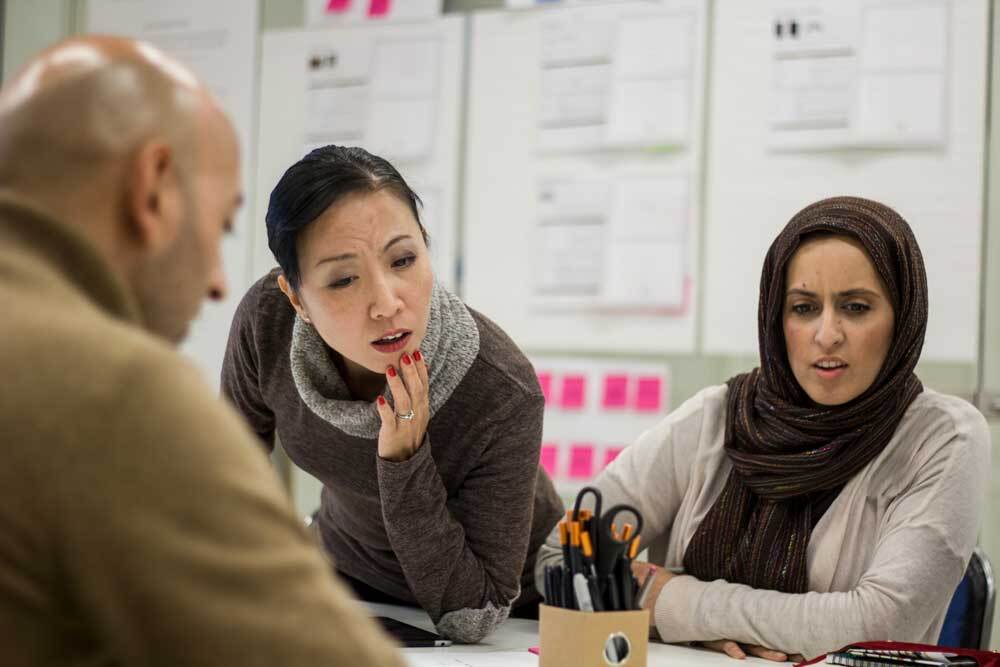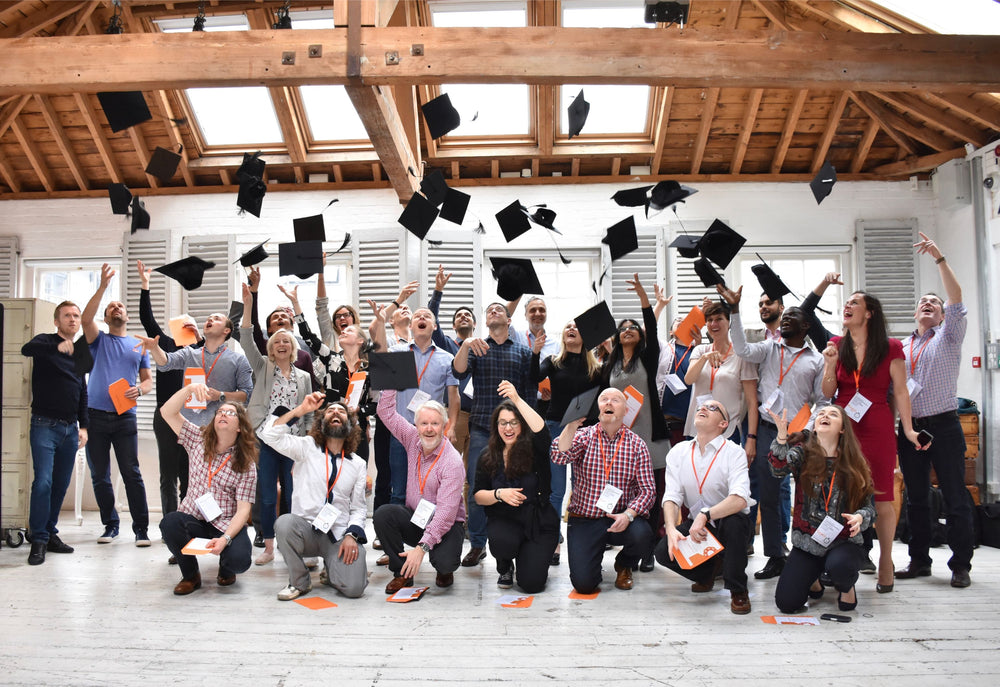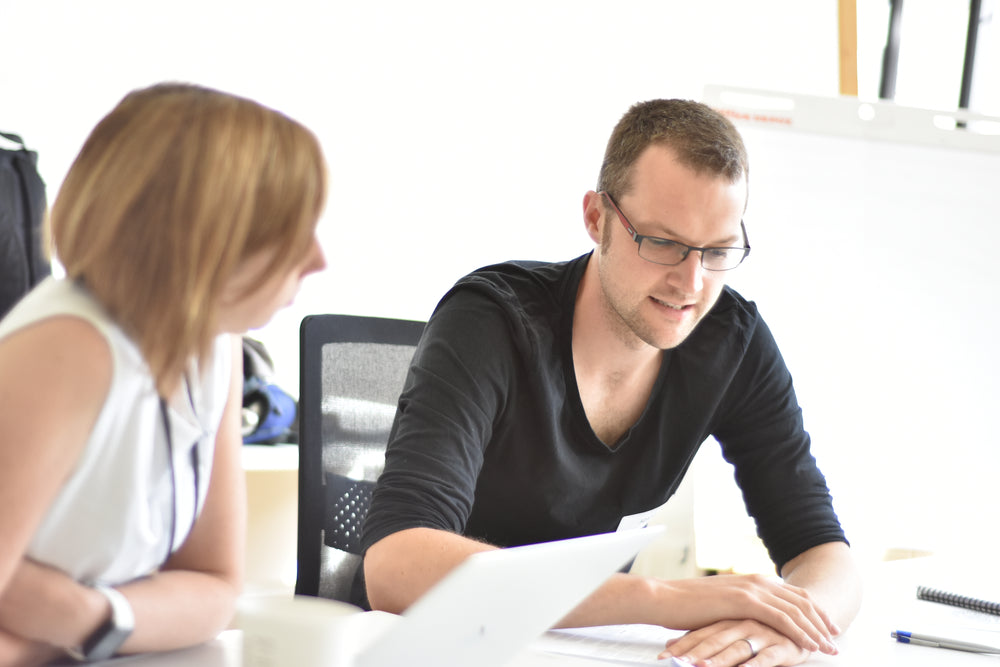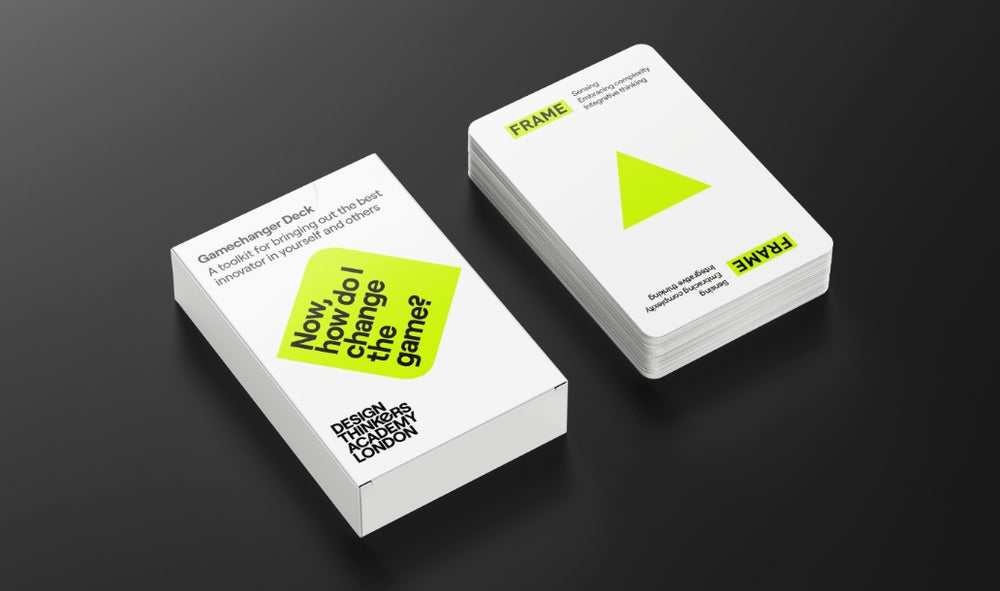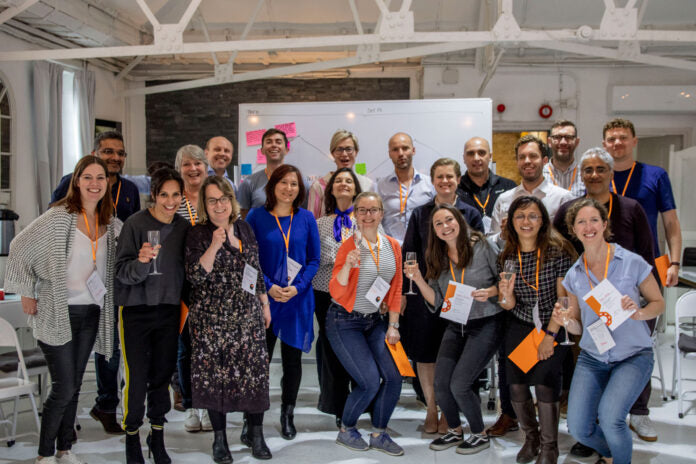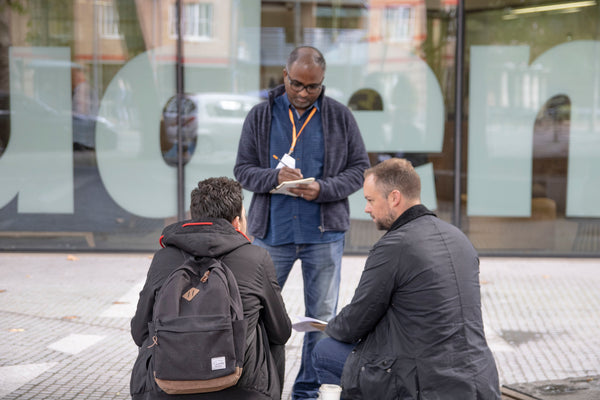“I came across the concept of Design Thinking whilst leading the digital transformation project at my previous company. We tried an impromptu version of the user-centred approach at a workshop. There I saw first-hand how it helped to transform a somewhat sceptical director, into keen and curious enthusiast. We uncovered, through the use of personas, that his team were hampered from doing their higher value tasks, as they were firefighting basic failures elsewhere. As a leader of change projects, I realised it was a powerful way to get people engaged in change and that spiked my curiosity. It led me to want to know more.”
Tara Yamashita’s design thinking journey is a more layered one than most. Coming from a background in strategy, transformation and business improvement, Tara previously worked in large corporate environments, including EY, BT and PwC, most recently as VP Group Strategy at BAE Systems. After briefly encountering design thinking during the digital transformation project and seeing the potential, Tara decided she wanted to know more. This led her to the Design Thinkers Bootcamp course.
Tara explains, “I wanted to know if I could apply design thinking to business-related strategic and change issues. This could potentially expand outside of ‘traditional’ areas where I might associate design – i.e. products and services. And if so, I wanted to understand how I could incorporate this into my existing toolsets, to help companies innovate better and faster.”

Design Thinkers Bootcamp
Going into the Bootcamp, Tara did not know what to expect. She arrived with an open-mind and an expectation that she would learn some new tools. However, the course provided her with much more than that.
“It was great – the sheer energy, the camaraderie, the tools, the flow, the brilliant coaches. It was a fantastic course.”
In the process, Tara realised, “that design thinking can be applied to the business problems I deal with in strategy and change. The user-centric and visual approach really helps mobilise change and bring people on board.”
Following the course Tara set up as an independent Strategy and Transformation Director, working to embed what she had learned. So, Tara approached the Design Thinkers Academy London to come and join the team for a period, working across a range of projects.
Tara says that “working with the Design Thinkers Academy London has helped to consolidate a lot of the learnings. It’s all about putting things into practice. I realised how much I’ve progressed when I recently had a conversation with a friend. He had just been through a design thinking workshop but didn’t really ‘get it’. So, I took him through what I would do with my design thinking hat on – with what I’ve now learned. He appreciated it because it gave him an insight to go back and query the approach and potentially make some suggestions. It was really satisfying for me to realise I could already roughly see how you execute a design thinking project and help others. The mindset is key, even more so than the process itself.”
Design Thinking Facilitation
Tara’s journey did not stop there. Next she then went on our Design Thinking Facilitation course. ‘”This course is a natural progression from Bootcamp (or Design Thinking Fundamentals). It gave me the opportunity to embed the tools and techniques and also offered a safe environment to try new things; which is what I did.” The subsequent follow up advice and feedback sessions helped cement that. “Following a course is often the bit people struggle with, yet this gives a chance to reflect on what you’ve learned.”
Now it is all about the next steps and “doing strategy and transformation differently. My aim is to create strategic and transformation change using a much more user-centered, interactive, facilitative approach. This will incorporate design thinking into existing toolsets I have acquired over my time in business.”
This may not necessarily be about big changes. As Tara states, “sometimes it’s the little things that can make a big difference in change and transformation.” For Tara, that ability to make that difference now includes design thinking.

